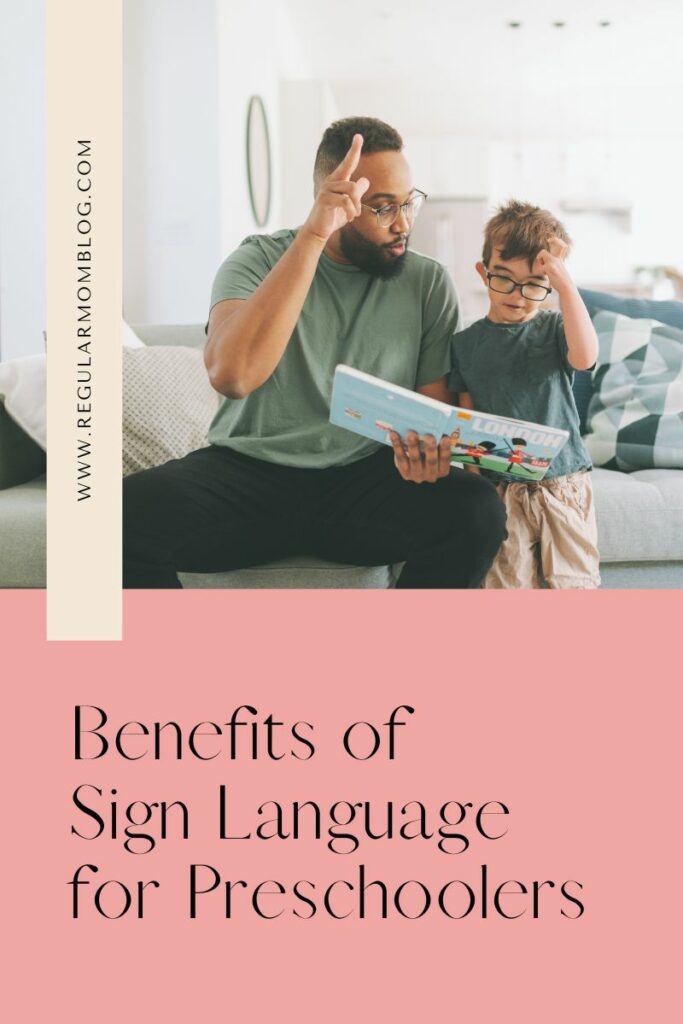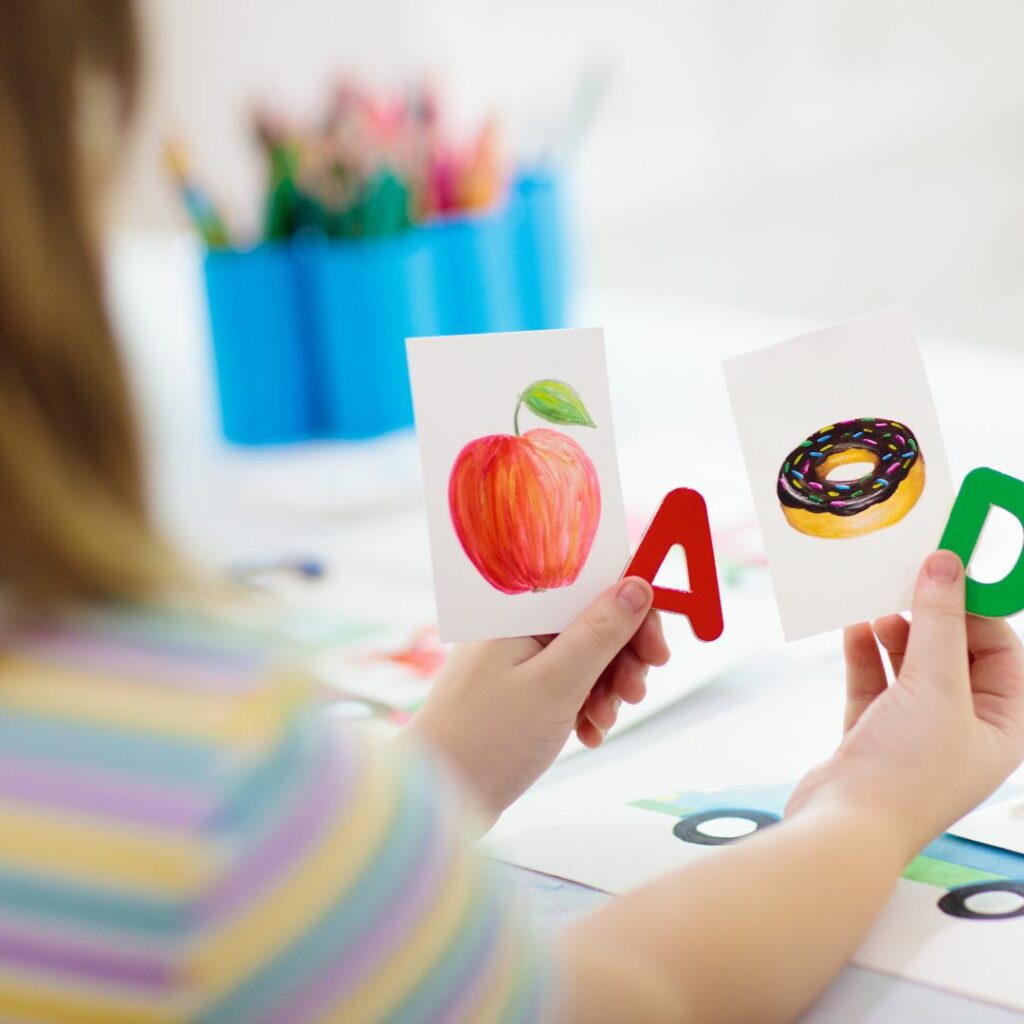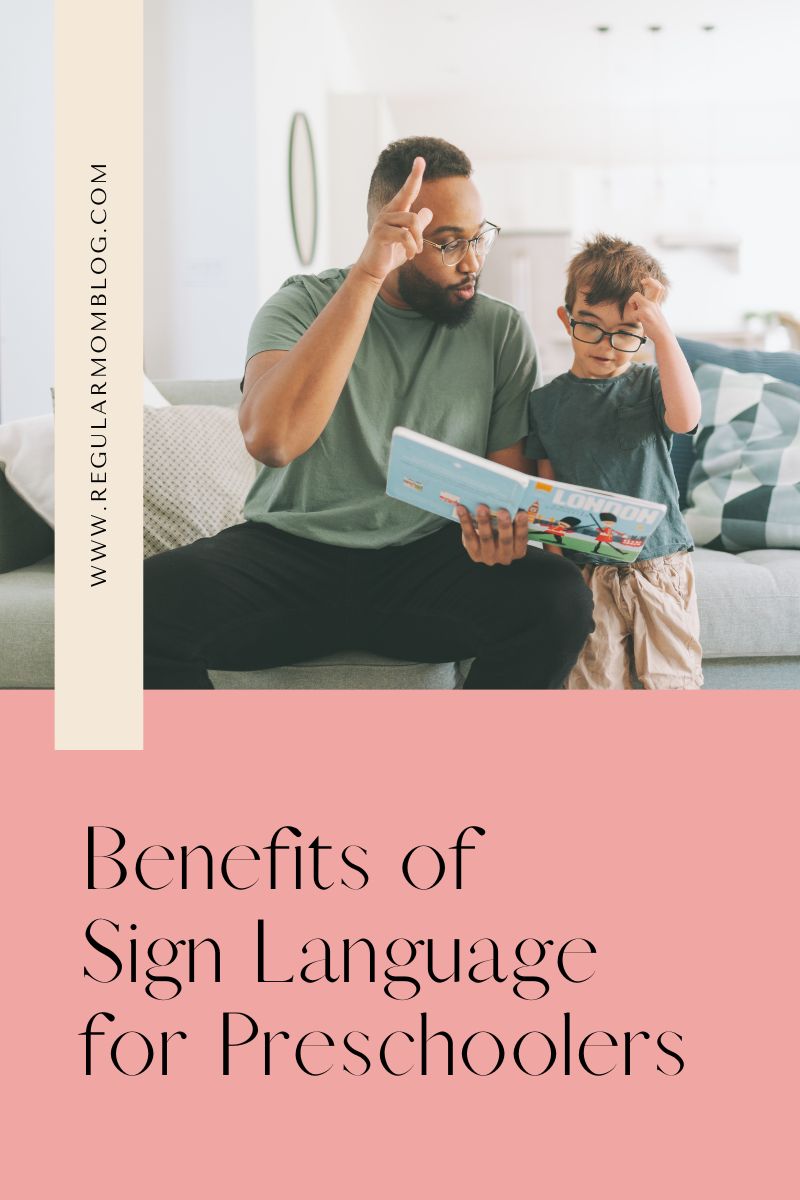advocacy
It’s time to get clear on a language strategy for your child so that you can consistently practice language in your home and watch your child’s communication soar in less time!
Welcome!
I want to show you how to build better language skills at home so you can also parent with clarity and confidence!
Categories
hearing loss
sensory activities
sign language
1:1 Language Coaching
These are the kinds of resources that you will find on my blog!
Happy reading!
Benefits of Sign Language for Preschoolers
September 16, 2023
As a parent of a child with hearing loss, you understand the importance of language learning. One great way to help your child build better language skills is by understanding the benefits of sign language for preschooolers.

One of the best times to start building language skills is during the preschool age! At this age kids’ brains are primed for all types of learning.
As I noticed with my boys, their spoken language and sign language use really exploded at that time! With the use of regular speech therapy, and working on speech goals at home, my children increased their language levels significantly in a short period of time.
In this blog post, we’ll explore the benefits of sign language for preschoolers and provide you with some tips on how to get started.
Sign Language for Preschoolers
Communication is an essential need for humans to connect with each other. When a person can’t communicate effectively, they become frusterated and also scared when they think their needs won’t be met because of a lack of communication.
For example, think of how much frusteration you would feel if you travel to a country where you don’t speak the language, and you can’t order the food you want or understand the directions to get to your hotel.
That would be pretty scary to be in a place where you don’t feel heard or understood.
Your preschooler feels the same way! Your child wants to connect and communciate with you, but they don’t know enough words yet to express what they are thinking.
That is where sign language comes in! Sign Language can bridge the gap in communication so that your child feels hear and understood.
Even if you plan to focus more on spoken language, sign language can be a great communication tool to build language skills while your child is learning spoken language.
It’s worth it to consider incorporating some ASL signs into your daily routine to help your child go through the day more confidently!
Sign Language Builds Vocabulary
A child’s vocabulary begins to grow rapidly during the preschool years.
For kid with hearing loss, sign lanuage might be a more accessible and faster way to learn language while they are also learning spoken language skills.
Children are naturally focused on movement and motor skills, and signing fits perfectly into the way that a child naturally wants to move.

Therefore, children tend to pick up more quickly on ASL signs at first than they do on speaking words.
Interestingly, when a sign is introduced alongside a spoken word, children are more likely to remember it better than if they are just exposed to the spoken word.
Especially if hearing the words is challenging, sign language allows kids to develop their vocabulary by providing visual cues to associate with new words.
Encourages Socialization
Learning sign language not only aids in communication with parents, it also helps children socialize with their peers who may also use sign language.
By teaching your child sign language early on, they will be better equipped to make connections with other children who also use sign language as their primary mode of communication.
Therefore, they can create a community of other kids who understand the experience of being deaf or hard of hearing.
Learning sign language also allows your preschooler to socialize better with you as a parent!
When your child can understand language, then they can play back and forth with you and learn other social skills like learn taking and courtesy words.
This connection is so fun when you and your child begin to be able to truly play and connect together through language!
Makes Learning Fun
Teaching sign language to a child can seem like a daunting task, but it doesn’t have to be.
Incorporating sign language into your child’s daily routines can make it fun and easy to learn!
For example, you can start by introducing signs for items around the house or during mealtime. Using animated facial expressions and exaggerated signing can also make the language more engaging for a young learner.

Additionally you can use ASL signs while doing any sort of play time. Involve kinesthetic movement and sign “jump” while your child jumps really high, or show them the sign for “swing” and they laugh and play on a swing set.
Since kids learn best by being active, using sign language is a dynamic way to get kids involved in learning language skills!
Ways for a Preschooler to Learn Sign Language
Numerous online resources exist to aid preschoolers in their journey of learning sign language.
Websites like ASL Pro offer free, educational videos that teach sign language in an engaging and kid-friendly manner.
Apps such as Marlee Signs, featuring renowned actress Marlee Matlin, provide interactive lessons on basic sign language vocabulary.
YouTube channels, like the popular “Signing Time,” offer educational videos with songs and animation to make learning sign language fun and engaging.
I also love the Youtube channel Simple Signs with Ally. Ally does a great job explaining basic sign language for children and shows you how to do each sign in an easy way.
Remember, it’s crucial to choose resources that are age-appropriate and engaging, making learning a new language an exciting adventure rather than a tiresome chore.

Teaching sign language to your preschool age child can have significant benefits for both you and your child.
By enhancing their communication skills, building their vocabulary, and improving socialization and cognitive development, your child will be better equipped for success both in and out of the classroom.
So, don’t hesitate to start teaching sign language today!
More ASL Resources

tell me more!
tell me more!
@alemerinobranding.co
DESIGNED BY: ALE MERINO BRANDING CO.
COACHING
Navigation
PODCAST
ABOUT
HOME
Legal
PRIVACY POLICY
TERMS & CONDITIONS
Let's connect
EMAIL hello@raisingdeafkids.com
BLOG